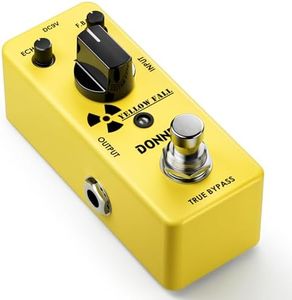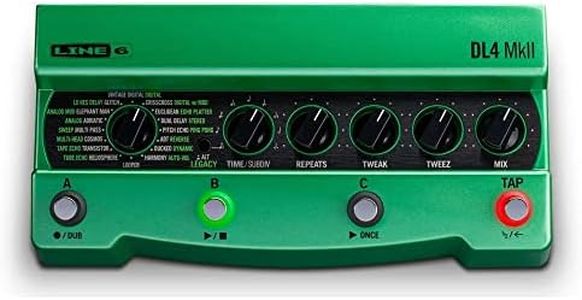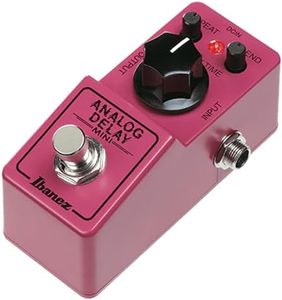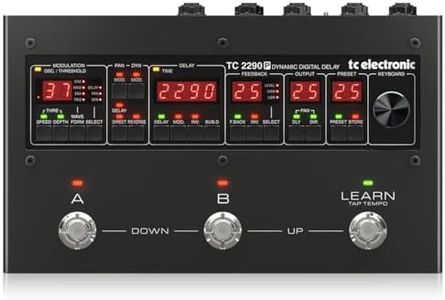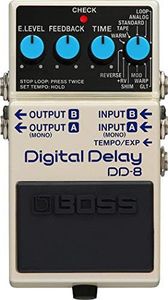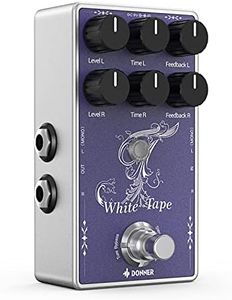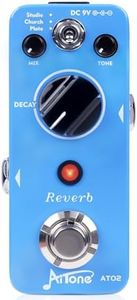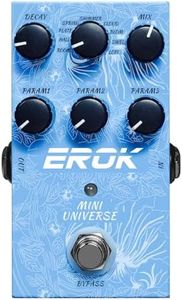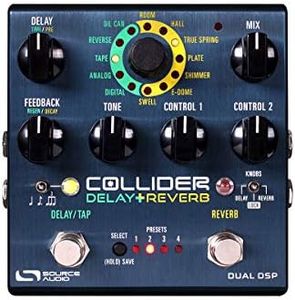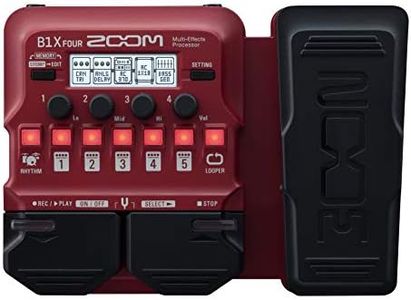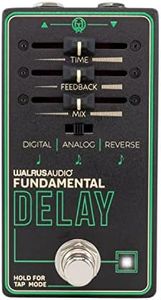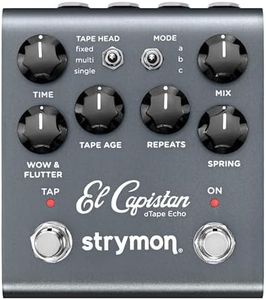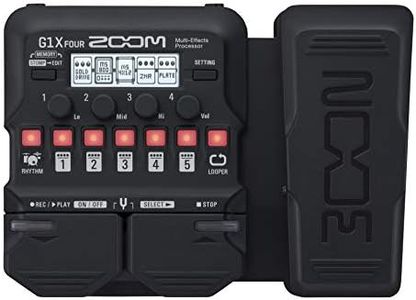10 Best Delay Pedals 2025 in the United States
Our technology thoroughly searches through the online shopping world, reviewing hundreds of sites. We then process and analyze this information, updating in real-time to bring you the latest top-rated products. This way, you always get the best and most current options available.

Our Top Picks
Winner
Donner Guitar Delay Pedal for Pedal Boards, Electric Guitar, Yellow Fall Analog Delay Mini Guitar Effect Pedal Vintage Delay, True Bypass
Most important from
21465 reviews
The Donner Yellow Fall Analog Delay Pedal offers a warm and natural vintage analog delay sound, which is great if you appreciate classic tones rather than digital clarity. It provides a flexible delay time from 20ms to 620ms, allowing for a range of echo effects, and you can adjust the delay level and feedback to control how many repeats you get. True bypass ensures your guitar's tone stays clean when the pedal is off, and the LED indicator clearly shows when it's active.
Its compact and sturdy aluminum design makes it ideal for crowded pedalboards and regular use. While it does not include modulation features or a tap tempo function, which are common in more advanced delay pedals and can be useful if you want to sync delay timing to your music on the fly, it requires a 9V power supply that you need to provide separately.
This pedal is suited for players who want a straightforward, reliable analog delay effect with good sound quality and easy controls, especially if you are building a simple pedalboard and don't need extra digital features.
Most important from
21465 reviews
Line 6 DL4 MKII Delay Modeler, Green
The Line 6 DL4 MKII Delay Modeler is a feature-rich digital delay pedal that builds on the legacy of the original DL4. It offers a comprehensive selection of 30 delay effects, including 15 new MkII delays and 14 original DL4 delays, complemented by the Echo Platter from the Echo Pro. The pedal's ability to deliver diverse delay times and feedback options makes it versatile for various musical styles and applications. The modulation feature enhances the sonic possibilities, providing users with creative flexibility.
Additionally, the tap tempo function allows for precise timing adjustments in real-time, which is crucial for live performances. One of the standout features is the inclusion of two looper types, offering up to 240 seconds of looping time or extended looping with an optional microSD card. The XLR dynamic microphone input is a unique addition, allowing for vocal processing and looping, which can be beneficial for solo performers and vocalists. The MIDI In, Out/Thru DIN connectors expand its usability with MIDI gear, allowing for seamless integration and control. Users can store up to 128 presets via MIDI, and footswitch control for up to six presets simplifies on-the-fly adjustments.
The option to switch between true, buffered, or DSP bypass ensures that the pedal can fit into various signal chain requirements without compromising tone integrity. On the downside, the DL4 MKII's digital format might not appeal to purists who prefer the warmth of analog delay pedals. Its weight of 1.4 kilograms (3.08 pounds) is relatively hefty, which could be a consideration for musicians looking for portable gear. However, this is balanced by its robust build quality and extensive feature set. The Line 6 DL4 MKII is ideally suited for guitarists and musicians who seek versatility and advanced features in a delay pedal, making it a valuable tool for both live and studio settings.
IBANEZ Analogue Delay Mini Effect Device - Made in Japan (ADMINI),Silver
Most important from
1061 reviews
The Ibanez Analogue Delay Mini is a compact and straightforward analog delay pedal ideal for players who want warm, vintage-style delay sounds without taking up much space on their pedalboard. It offers a delay time range from 20ms to 600ms, which covers short slap-back echoes up to moderate delay repeats. The 'Repeat' control effectively adjusts the feedback, allowing you to create anything from a few repeats to longer, fading echoes. Its 100% analog circuit provides rich and natural delay tones that many players prefer over digital clarity. True bypass switching means your guitar’s tone stays pure when the pedal is off, which is a plus for tone-conscious musicians. The pedal includes a 'Blend' knob to mix the delayed signal with your original sound, giving you control over how prominent the effect is.
While it lacks features like modulation—which adds movement or shimmer to the repeats—and tap tempo—which lets you set delay timing on the fly, common on more advanced or digital delay pedals, it remains effective for classic delay needs. Also, being an analog pedal, the maximum delay time is shorter compared to digital models but generally sufficient for classic echo effects. Its small size and solid build make it great for players looking for a simple, reliable analog delay without complicated controls or extra effects.
This pedal suits guitarists seeking authentic analog delay tones in a compact package, though it may feel limited for those wanting more versatility or longer, more complex delay patterns.
Most important from
1061 reviews
Buying Guide for the Best Delay Pedals
When choosing a delay pedal, it's important to consider how you plan to use it in your music. Delay pedals can add depth, texture, and rhythmic complexity to your sound, making them a versatile tool for any guitarist. Understanding the key specifications will help you find the best fit for your needs, whether you're looking for simple echo effects or more complex, modulated delays.FAQ
Most Popular Categories Right Now


